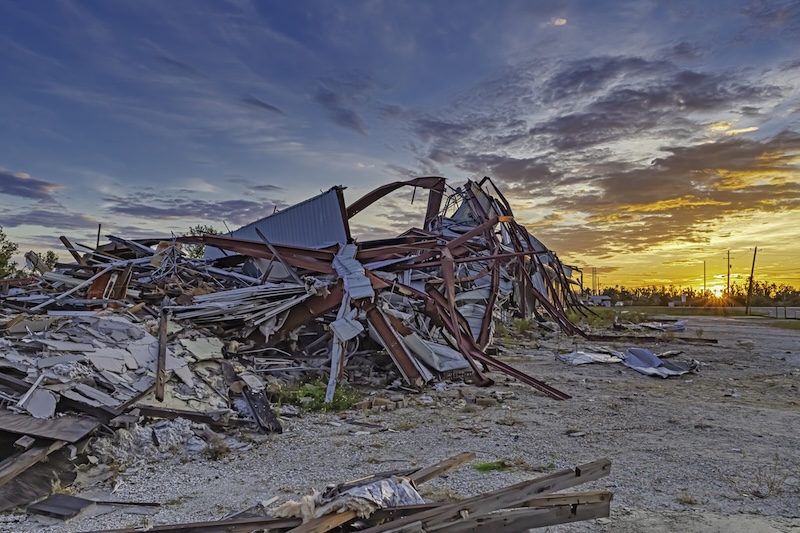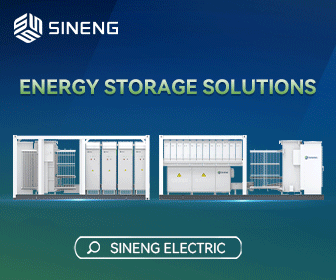Out of Harm’s Way: Proper battery installation
As the headlines attest, Mother Nature is powerful and can unleash any sort of tempest she chooses — anywhere and anytime. Ice storms in Texas, snow in Georgia, tornadoes in Kansas, and hurricanes that hit Gulf states and travel up the East Coast are just some of the weather systems that wreak havoc. Not to be overlooked, however, are natural disasters like earthquakes, landslides, and wildfires. Whatever the situation, extreme conditions can cause significant property damage and upend daily living. For companies installing energy storage systems, it’s imperative to think about worst case scenarios because customers are counting on having power, especially during times of crisis.
Cold weather considerations
When the mercury plummets, it impacts all lithium batteries, specifically their ability to charge and discharge. There are several reasons for this. Cold temperatures slow down the chemical reactions inside a battery, limiting its ability to deliver power. This slowdown creates higher internal resistance, further hindering power output. Most battery manufacturers warn users not to charge when it’s below freezing. (This sort of “fine print” is found in the user’s manual, so be sure to read up on each battery system before specifying it).

In fact, if a lithium battery is charged too quickly at below freezing temperatures, it can cause dendritic growth. These are needle-like structures that can multiply within the cell —over time they can pierce the separator between the anode and cathode, creating short circuits and reduced battery performance.
It’s important to note that, in the cold, all users may notice that the battery's voltage will drop faster and will have less available capacity at a certain discharge rate. That’s not usually a cause for concern since it’s temporary, and capacity typically returns as the battery warms up.
For installers working in cold weather climates, it’s important to know that there are different lithium cell chemistries that can handle cold temps better than others. Lithium Ferro Phosphate (LFP) chemistry is known for its wider operating temperature range and, depending on the specific chemistry, can be more cold-weather tolerant.
Warming up a battery
Different battery manufacturers handle cold weather differently. Some have firmware built into the BMS that controls the charge rate. These systems use the charging activity of the battery to warm it up. The BMS will curtail the charge rate to a slow current, similar to a trickle charge, warming up the battery from the inside out. As the battery charges, its temperature rises and the BMS responds by increasing the charge rate. This approach is typically more energy efficient than incorporating a heating element, which can draw 75 to 300 watts per battery. With an appropriate design, a battery could have an external heater that only uses power when the battery is in the charge state or can route excess solar generation to a diversion load that can heat the battery.
For batteries that don’t have an advanced BMS, there are other outdoor warming options. Placing the batteries in an insulated cabinet provides ambient thermal cycling and retains heat from battery charging. In some cases, the inverter can be placed within the cabinet, contributing additional heat. Finally, a temperature-controlled heating pad can keep batteries warm during cold snaps.
Of course, another option is to install the battery stack indoors. If you’re considering this method, be sure to work with the AHJ (Authority Having Jurisdiction) who will be aware of specific regulations on indoor installations.

Earthquakes are everywhere
While earthquakes occur most often in Alaska, California, and Hawaii, there are other pockets of activity around the United States. Washington and Oregon are in the Cascadia Subduction Zone; northeastern Arkansas, southeastern Missouri, western Tennessee, western Kentucky, and southern Illinois are in the New Madrid Seismic Zone.
Regardless of location, batteries need to be able to withstand a severe shaking event. There’s even an earthquake vibration test (GR-63-CORE, Issue 5. Section 4.4.1) that simulates a 30-second Zone 4 earthquake with multiple accelerations in different axes above 1.5 G for both wall- and ground-mounted battery installations.
For the wall-mounted, fully floating test, the batteries are installed off the ground and onto a wall structure. The entire system is then placed on a massive shake table that recreates an earthquake. Battery systems are closely inspected following the test and must pass a number of criteria in order to receive certification, e.g., they must remain in place without shearing off from the wall, there must be no deformation of the battery or mounting structure, and they must continue to operate.
Battery manufacturers must note in their user’s manual if the batteries are suitable for indoor installation, seismic locations, or not suitable for residential use.

Hurricanes, flooding and rainstorms
Of course, water is the natural enemy of electricity and batteries so location, location, location is critical in areas where flooding might be a concern.
Installing the batteries indoors and off the floor is one option. Otherwise, mounting them on an exterior wall a good distance above the ground is another preventative measure.
Look for IP65 (Ingress Protection) rated batteries. The IP65 rating is significant because the “6” indicates complete dust protection, meaning dust ingress is prevented. The “5” indicates the battery enclosure protects the system from low-pressure water jets from any direction, like rain, water spray, and splashing.
Wherever batteries are installed, it’s important to evaluate a variety of scenarios that could impact their performance and longevity. Knowing the ESS and understanding its operating criteria is the first step to mitigating the impact extreme conditions can have on batteries.
 Sequoya Cross is Vice President of Energy Storage for Briggs & Stratton Energy Solutions and has 20-plus years of experience in the renewable energy space. She is the former CEO of two solar companies and was previously VP of Operations for AEE Solar, one of the foremost renewable energy distributors in the Americas. Her technical background has allowed for a strategic focus on system design and implementation of customized solutions all over the world. In 2024, Cross, who is highly respected within the industry, was elected to serve on the California Solar & Storage Association (CALSSA) board of directors.
Sequoya Cross is Vice President of Energy Storage for Briggs & Stratton Energy Solutions and has 20-plus years of experience in the renewable energy space. She is the former CEO of two solar companies and was previously VP of Operations for AEE Solar, one of the foremost renewable energy distributors in the Americas. Her technical background has allowed for a strategic focus on system design and implementation of customized solutions all over the world. In 2024, Cross, who is highly respected within the industry, was elected to serve on the California Solar & Storage Association (CALSSA) board of directors.
Briggs & Stratton Energy Solutions | briggsandstratton.com
Author: Sequoya Cross
Volume: 2025 July/August










